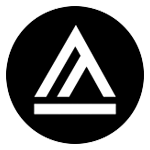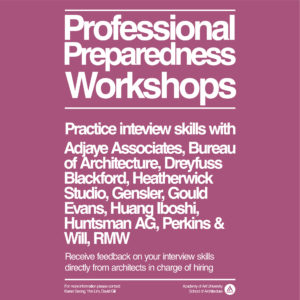Architects from leading firms in the Bay Area and beyond generously offered their time to help students practice interview skills.
To view some of the recorded practice interviews please see below for links:
PPWS Interview Juke Jose and Naomi Rojas with Gensler 2020-08-07
PPWS Interview Juliana Bento with Emily Huang 2020-08-05
PPWS Interview Daniel Forthuber with Perkins and Will 2020-07-31
When preparing for an interview, the following are some common expectations.
Research
- Ask questions based on the research of the firm and the interviewer on the firm website, social media channels, LinkedIn.
- Do not ask a question the answer to which can be found on the firm’s website
- Show curiosity
Self-Assessment
- Describe your “story” highlighting values and goals important to you
- Discuss your strengths and weaknesses indicating a level of self-reflection
- Describe how you would contribute to the firm
Portfolio
- Speak with clarity and confidence about the projects in the portfolio
- Present your work highlighting skills shown in the portfolio (conceptual thinking, diagramming, model making, sketching, drawing, technical details, research skills, craftsmanship, visual communication, collaboration, etc.)
- Describe your role in group projects clearly and accurately (giving credit to teammates when applicable)
- Solicit feedback on improving your portfolio
After the Interview
- Send a thank you note elaborating on what you learned during the interview
- Ask to connect with interviewers via LinkedIn
In addition, remember the following:
- Send resume and portfolio in advance of the interview
- Arrive on time and have resume and portfolio ready to be shared (on screen if interview is via Zoom)
- Dress appropriately for the interview
- Provide a Zoom background that is free of distractions, ensure adequate lighting, minimize disruptive noises when needed by using ear buds or headsets
- Use a professional profile photo and ID name during the Zoom call
- Make eye contact, project your voice, and maintain attentive body posture
- Speak at a comfortable pace (avoid speaking too fast)
- Actively listen (take notes, formulate follow-up questions based on what you hear)
To view an overview of the PPWS (Professional Preparedness Workshop) see this page.

